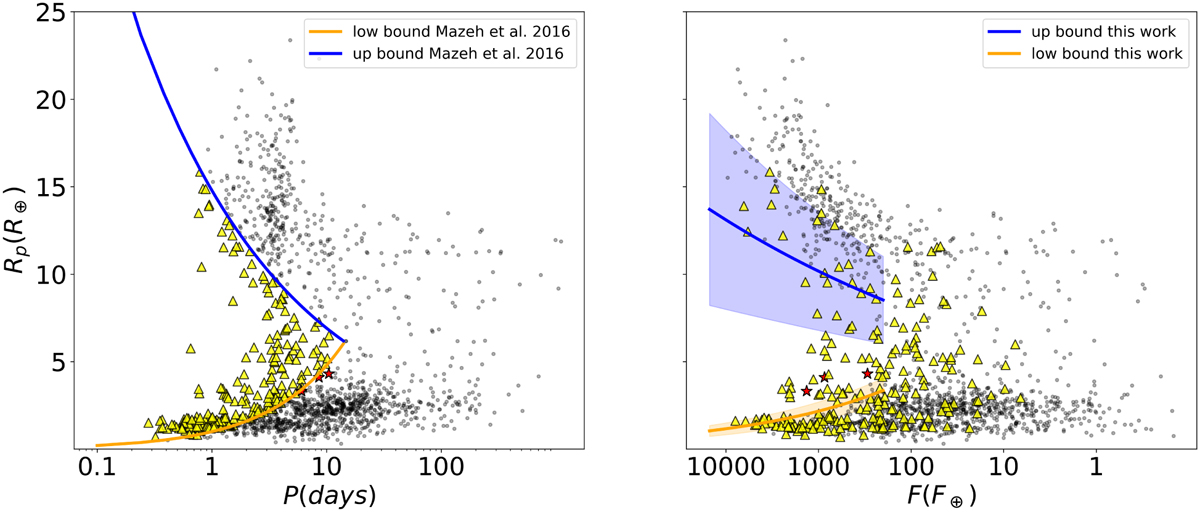Fig. 10

Download original image
Comparison of the S–1 sample distribution in the P – Rp and F – Rp planes to highlight the irradiation desert. Left: distribution of the S–1 sample in the P – Rp diagram along the edges obtained by Mazeh et al. (2016). The yellow triangles represent the 221 hot Neptunes within the S1 sample according to the definition of Mazeh et al. (2016) in the P – Rp plane. The black dots represent all the planets that lie outside the desert. Right: distribution of the S1 sample in the F – Rp plane. The orange and blue lines represent the lower and upper boundary obtained in Sect. 3.1 alongside their confidence bands (1σ). The yellow triangles show the 194 out of 221 objects that do not lie within the irradiation desert defined in this work. The yellow triangles used to designate the hot Neptunes in the P – Rp diagram still refer to the same planets in the right plot. The red stars indicate planets that fall within our defined boundaries but not within those outlined by Mazeh et al. (2016).
Current usage metrics show cumulative count of Article Views (full-text article views including HTML views, PDF and ePub downloads, according to the available data) and Abstracts Views on Vision4Press platform.
Data correspond to usage on the plateform after 2015. The current usage metrics is available 48-96 hours after online publication and is updated daily on week days.
Initial download of the metrics may take a while.


